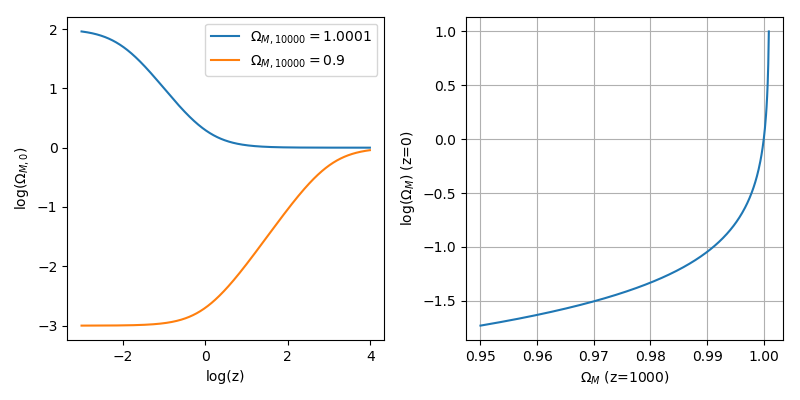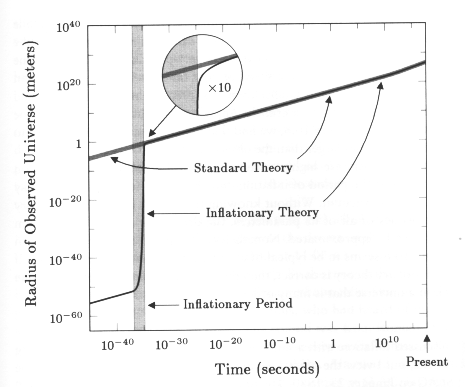The density of the Universe changes with time, as the Universe expands. So OmegaM, the ratio of the actual density to the critical density also changes:

(Strictly
speaking, this holds only for a matter dominated universe. But it's
only recently that dark energy has started affecting the expansion of
the universe, so early on the universe behaved like a matter dominated
universe....)
Let's look at two examples.
- At a redshift of z=10,000 (ie when the universe was 104 times smaller than now), it had a density parameter of 1.0001
- At a redshift of z=10,000, it had a density parameter of 0.9

In the universe that is slightly overdense at z=104, the density parameter today (at z=0) would be 100. In the universe that is slightly underdense at early times, we ought to measure a density parameter today of 0.001. Omega very quickly diverges from 1, unless it is equal to 1.
It gets worse. Look at this figure (from Ned Wright's Cosmology Tutorial): if the density of the universe had been ever so slightly non-critical 1 nanosecond after the big bang, we would have a drastically different universe:






